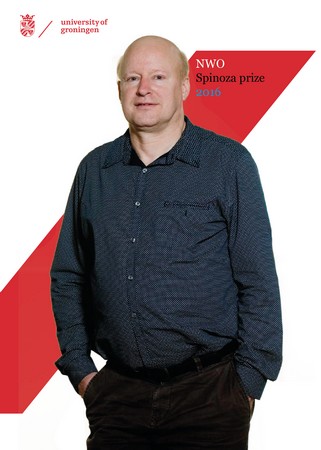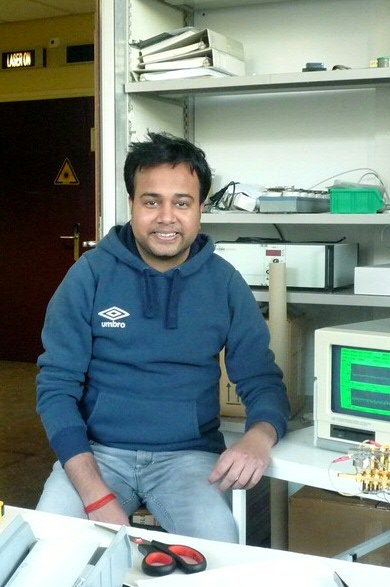New measurements show spin transistor is within reach
University of Groningen physicists Siddhartha Omar and professor Bart van der Wees have shown that it is possible to influence the lifetime of spin in graphene. They used tungsten disulfide to induce spin orbit coupling in graphene and were able to tune the effect with an electric field. This confirms that it is possible to make a graphene-based spin transistor, which is a vital component in spin-based electronics or spintronics. The results were published on 16 January in Physical Reviews B.


Spintronics could form a low-power alternative to electronic devices. It is based not on a charge current but on a current of electron spins. Bart van Wees, professor of Physics of Nanodevices at the University of Groningen: “The spin is a quantum mechanical property of electrons, which can best be imagined as small spheres spinning around their own axis, causing them to behave like small compass needles. This spin can assume two values, ‘up’ or ‘down’, which in principle makes it suitable for storing or transporting information.”
Manipulation
As graphene, the two-dimensional form of carbon, is an excellent conductor of spin currents, this material would be ideal for spintronics. However, it is very difficult to manipulate spin currents in graphene. Earlier work from the lab of Bart van Wees has shown that it is possible to affect spins in graphene by placing a layer of material containing heavy atoms on top of the graphene.
PhD student Siddhartha Omar placed a strip of graphene on top of a flake of tungsten disulfide. First, he investigated claims that spins are absorbed from graphene by the tungsten material. His measurements made it clear that this is not the case, but that the spin lifetime in graphene is reduced by the heavy atoms. “The electrons moving close to the tungsten atoms experience a “magnetic field”, which pulls on the electrons in the graphene and affects their spin direction.” This effect is called spin orbit coupling.
Magnetic field
Next, he put a voltage on the device, creating an electric field. “With this field, we could change the direction of the “magnetic field” created by the tungsten material. And changing this magnetic field means applying a stronger or weaker spin orbit coupling. This means we could tune the lifetime of the spins in graphene.”
Although this was not done in the current experiments, shortening the lifetime of a spin current is a way of turning this current off. “So we have now shown that we are able to induce spin orbit coupling in graphene and use this to control spin relaxation time and thereby the spin current. These are the two basic requirements needed to make a spin transistor.” As far as he is aware, a proper spin transistor has never yet been realized. “But theoretical models predict how it can be done. And that will certainly be our next step.”
About the video: Spinning electrons unleash microelectronics revolution
Computer chips are becoming more and more powerful. This is possible because the circuits on the chips are becoming smaller and smaller. However, the limits to this shrinking process are in sight. Heat production by the chips is another problem. Scientists are searching for a solution that can produce faster, more efficient computer chips. Spintronics, a type of electronics that is based on the magnetic properties of electrons instead of their charge, is one of the options. Physics Professor Bart van Wees of the University of Groningen is working hard to make this a reality.
Reference: S. Omar, B.J. van Wees and I.J. Vera-Marun: A two-channel model for spin-relaxation noise. Physics Review B, 2017, DOI 10.1103/PhysRevB.96.235439
More news
-
15 September 2025
Successful visit to the UG by Rector of Institut Teknologi Bandung
